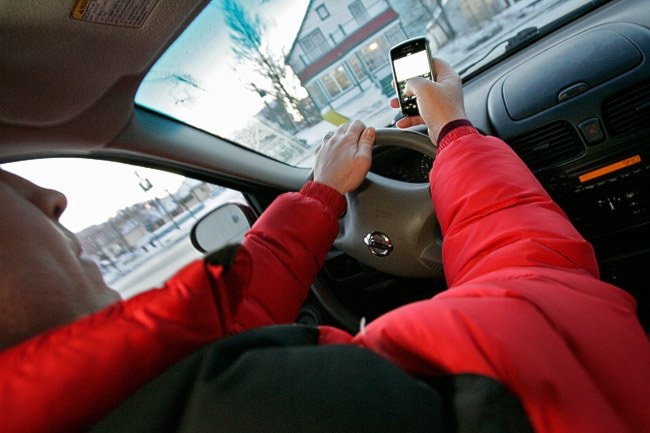Sgt. Don Rogers saw no shortage of stupid behaviour behind the steering wheel while patrolling in southeast Alberta.
Now that he’s the media liaison for the RCMP’s “M” Division in the Yukon, he’s no longer handing out traffic tickets, but he harbours few illusions that the same sloppy driving habits don’t haunt us here.
Beyond the casual coffee sippers and cellphone chatters, a few remarkable examples leap to mind.
Rogers pulled over one woman who was driving, talking on the phone and applying makeup all at once.
He found another driver playing videogames - Nintendo’s portable DS system - in traffic.
And Rogers pulled up to one commuter who was reading a book behind the wheel, and was “just oblivious” when Rogers began to flash his lights.
It would be a lot more funny if most of us didn’t have a similar story, perhaps only slightly less ridiculous.
Tracy Erman, a road safety researcher with Yukon’s Department of Highways, has heard or witnessed her share of driving bloopers since taking up the job a little more than a year ago.
There are drivers with dogs in their laps, the animal’s head sticking out the side window.
There are parents behind the wheel who turn around to give their kids a whack.
“There’s always people driving with a drink in one hand, a hamburger in the other, using their knees to shift gears,” she said.
“Everyone has one of those stories.”
But here’s the part that worries her: The National Collision Database reports distractions contributed to one-fifth of crashes in the Yukon in 2008. That’s 169 bang-ups.
There’s good reason to suspect many of these crashes could have been easily prevented.
Four out of five automobile accidents could be avoided if the driver had just one extra second of reaction time, according to one European study.
Unfortunately, the number of driving distractions continues to grow with the proliferation of gadgets. Texting behind the wheel is widely seen as the current culprit.
Not surprisingly, drivers are more than 23 times as likely to crash if they’re texting, according to a study by Virginia Tech Transportation Institute.
The same study found drivers were nine times more likely to crash while reaching for an object in the car, and three times as likely to crash if they were applying makeup.
Most people recognize that texting while driving is reckless. But few see it as morally reprehensible, as drunk driving is now widely seen.
Erman wants to know why. Everyone knows both activities are dangerous. In both cases, the reaction time of a driver is reduced by a number of seconds.
To a pedestrian or driver who is about to be struck by a vehicle, it doesn’t matter much whether the negligent driver is holding a cellphone or a bottle.
These attitudes could be changing. In Oxford, England, 21-year-old Philippa Curtis was sentenced in November to 21-months in a high-security prison for “death by dangerous driving.”
She was speeding down a motorway at 70 kilometres per hour while texting when her Peugeot struck a parked car belonging to 24-year-old Victoria McBryde in November of 2007. McBride died instantly.
The sentencing judge said he hoped to send a message to youth that “to use a mobile phone while driving is folly.” But critics have slammed the sentence as being too light.
Meanwhile, jurisdictions throughout the Western world have begun to restrict cellphone use while driving. Some have outright banned cellphone-use in the drivers’ seat, while others require cellphone-using drivers to have hands-free headsets or dashboard-mounted speakers.
Yukon plans to hold public hearings on the subject sometime later this year as it prepares its own law to curb cellphone use while driving.
But there are limits to what governments can legislate. As Brad Cathers, Yukon’s Independent MLA from Lake Laberge recently noted, everyone recognizes that children are a distraction to many drivers, yet no one is talking about banning them from automobiles.
The government should instead encourage drivers to use common sense, Cathers said.
Unfortunately, there’s reason to worry that technological change, if anything, breeds a false sense of security.
In his book Traffic, author Tom Vanderbilt concludes that “the safer cars get, the more risks drivers choose to take.” He found, for example, that SUV owners were more likely to not wear seatbelts and talk on cellphones than other drivers.
As Rogers sees it, the boom in driving distractions stems from “today’s busy, hectic lifestyle.”
And the bad news? “I think we’re getting worse,” he said.
Some gadgets, such as GPS maps that offer directions, offer many advantages to drivers.
“But programming that before your trip would be much better,” said Rogers.
Bottom line: “Slow down. Plan your trips. And don’t be in such a hurry all the time.”
Contact John Thompson at
johnt@yukon-news.com.
